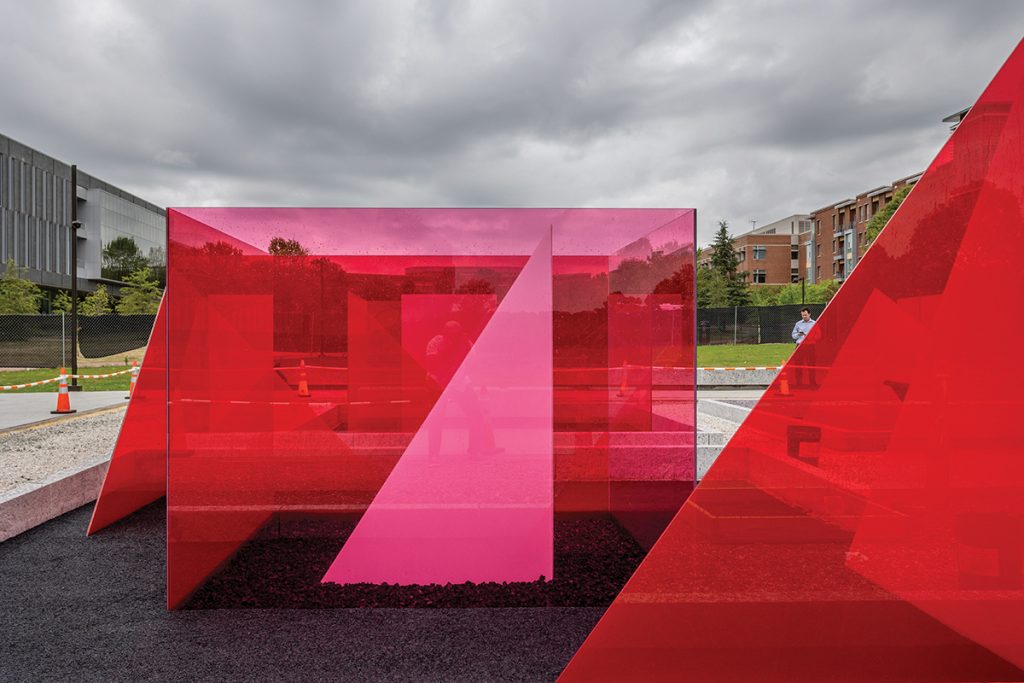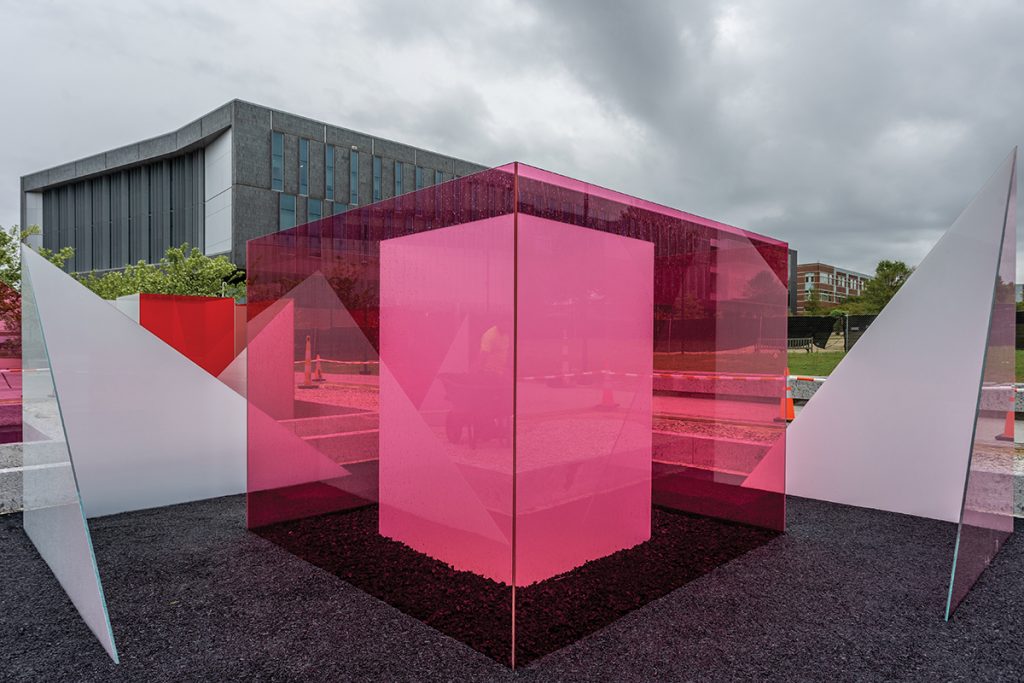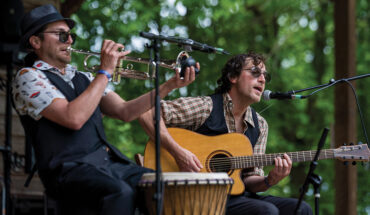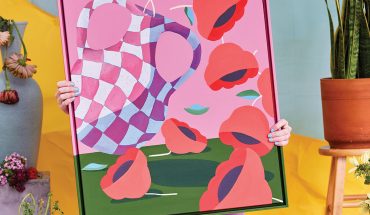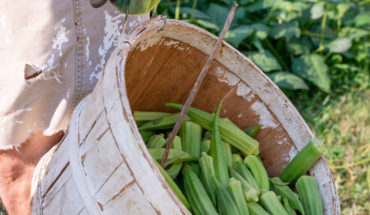An artistic collaboration between artist Larry Bell and landscape designer Mark Hoversten activates a gathering space on Centennial Campus.
by J. Michael Welton | photography by Trey Thomas
For North Carolina State University’s Centennial Campus, the new “Reds and Whites” lies at the heart of a holy grail of design.
More than a sculpture, it’s central to a three-part convergence of architecture, art and landscape.
It’s sited on an outdoor plaza where Snøhetta’s 2013 James Hunt Library meets Clark Nexsen’s 2020 Fitts-Woolard Hall. “Reds and Whites” is a three-dimensional work by critically acclaimed artist Larry Bell — refined by landscape design from Mark Hoversten, dean of the College of Design, in collaboration with Thomas Skolnicki, the university’s landscape architect.
It’s no small gesture. Bell created four 8-foot square glass cubes, aligned with Memorial Belltower on the North Campus, a mile and a half away. Hoversten planted two square bosques of nine deciduous trees at its east and west ends, adding a pair of granite seating walls to the north and south.
“It couldn’t overwhelm the art,” Hoversten says of the design.
The project was initiated by Susan Woodson, an artist who’s married to NC State chancellor Randy Woodson. She wanted a signature work of art equal to the quality and import of Hunt Library. For that, she first called Larry Wheeler, former director of the North Carolina Museum of Art. Then she rang up Hoversten, who served as a liaison to the Centennial Campus Public Art Committee.
Wheeler was the consultant for artist selection and contract preparation, and he interfaced with San Francisco’s Anthony Meier, the art gallery representing Bell.
Hoversten and Skolnicki flew to Bell’s Taos studio to work through the design. “He wanted it to be linear, but that interrupted spaces used for frisbee-throwing, sunbathing and tents for receptions and graduations,” Hoversten says. “We had conversations and then looked at a rectangular plaza instead.
The final product had to pass the “fraternity test” from skateboarders, Hoversten says. He used concrete paving for that, adding 4 to 5 feet of gravel alongside the sculpture for its protection. And the trees provide shade but cast no shadows on the sun-loving structure.
Now it’s a destination. “Students can say, I’ll meet you at the ‘Reds and Whites,’” he says.
And they’ll do that in a world-class space.
This article originally appeared in the June 2024 issue of WALTER magazine.

